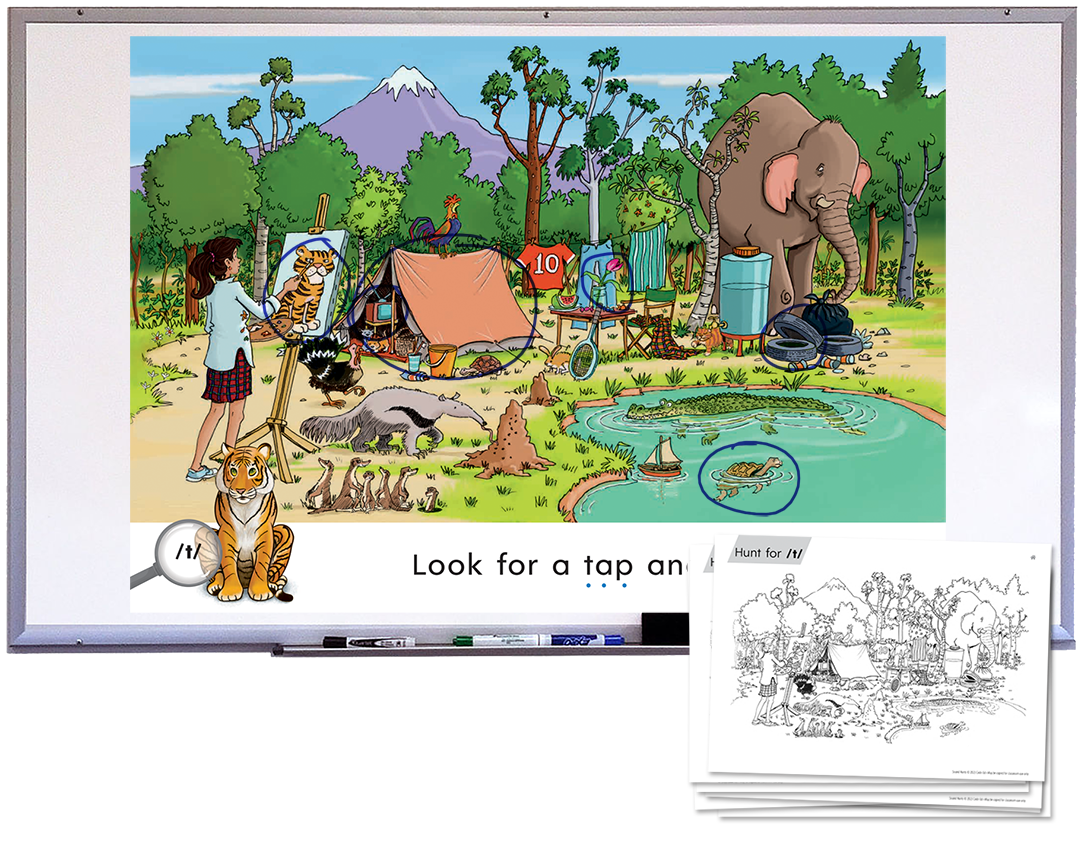Your cart is empty.
Visit the store to add items to your cart.

The Code-Ed Sound Hunts are large-format cards that teach students to recognise, read, and write every sound of English.
Detailed illustrations and quick, engaging activities developed by Joy Allcock support vocabulary and oral language, phonological and phonemic awareness, knowledge of the alphabetic code, and word recognition and decoding skills, which together build a strong foundation for learning to read and write.

The Sound Hunts are included in Grade K of The Code Is the Key.

The first card in the set is a helpful guide for using the Sound Hunts.

The set includes 39 A3-size Sound Hunt Cards with a detailed illustration on the front that gives students the opportunity to search for the sounds of English in different positions in words, such as the /k/ sound in kiwi, bucket, and duck. A sentence to read and integrated activities on the back of each card build a variety of foundational literacy skills, including:
A few sounds that occur less frequently are combined into a single card, but students always work with one sound at a time.

Digital and printable versions of the Sound Hunts are included with the complete set for interactive and flexible use.
Students will love hunting for sounds as they build vocabulary, background knowledge, phonemic awareness, and decoding skills.